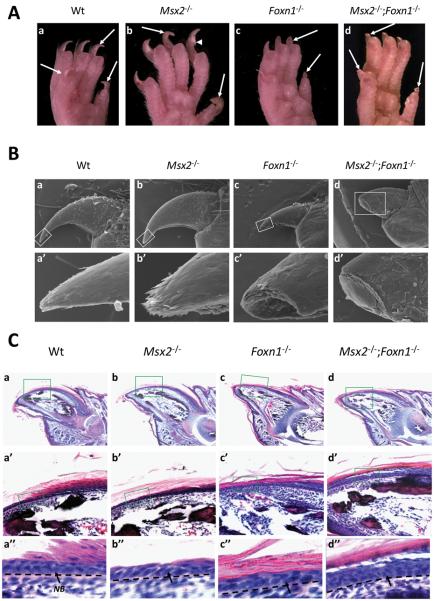Figure 2. Morphology and histology of wild type and various mutant nails.
(A) Morphology of adult wild type and various mutant nails from hind limbs. The nail plates of adult wild type mice are smooth, hard and with sharp tips (A.a). Msx2 mutant nails from the hind legs are longer than those of the wild type littermates but are frequently cracked (A.b, arrow head). Foxn1 mutant nails are broken in most of the mutant digits and exhibit blunt ends (A.c). Msx2 and Foxn1 double mutants still grow nails, which break beyond the hyponychium and also form blunt ends (A.d). (B) Scanning EM of 5-week old wild type and various mutant nails. The nail plates of adult wild type mice are smooth and with sharp tips (B.a, a′). No significant alteration is observed in a morphologically normal Msx2 mutant nail plate (B.b, b′). Foxn1 mutant nails are broken and exhibit blunt ends (B.c, c′). Msx2 and Foxn1 double mutant nails exhibit a rugged surface and irregular squames and break beyond the hyponychium (B.d, d′). (C) Histology of P7 wild type and various mutant nails. In both Msx2 and Foxn1 single and double mutant nails, the matrix cells were normal compared to wild type (C.a-d). The wild type nail bed (NB) is composed of a single basal layer and one or two suprabasal layers of postmitotic keratinocytes (C.a′, a″). Neither Msx2 nor Foxn1 single mutants show significant changes in nail bed structure (C.b′, b″, c′, c″). However, the double mutant nail bed undergoes hyperplasia and forms multilayers of cells with no visible transition from the nail matrix to the nail bed (C.d′, d″). In (B) and (C), a′-d′ and a″-d″ are higher magnifications of boxes in a-d. Black dashed lines demarcate the border between the nail bed and the underlying mesenchyme. Digit 4 from the hind limbs is used for this assay. In all panels, the nail tips are orientated towards the left side.

